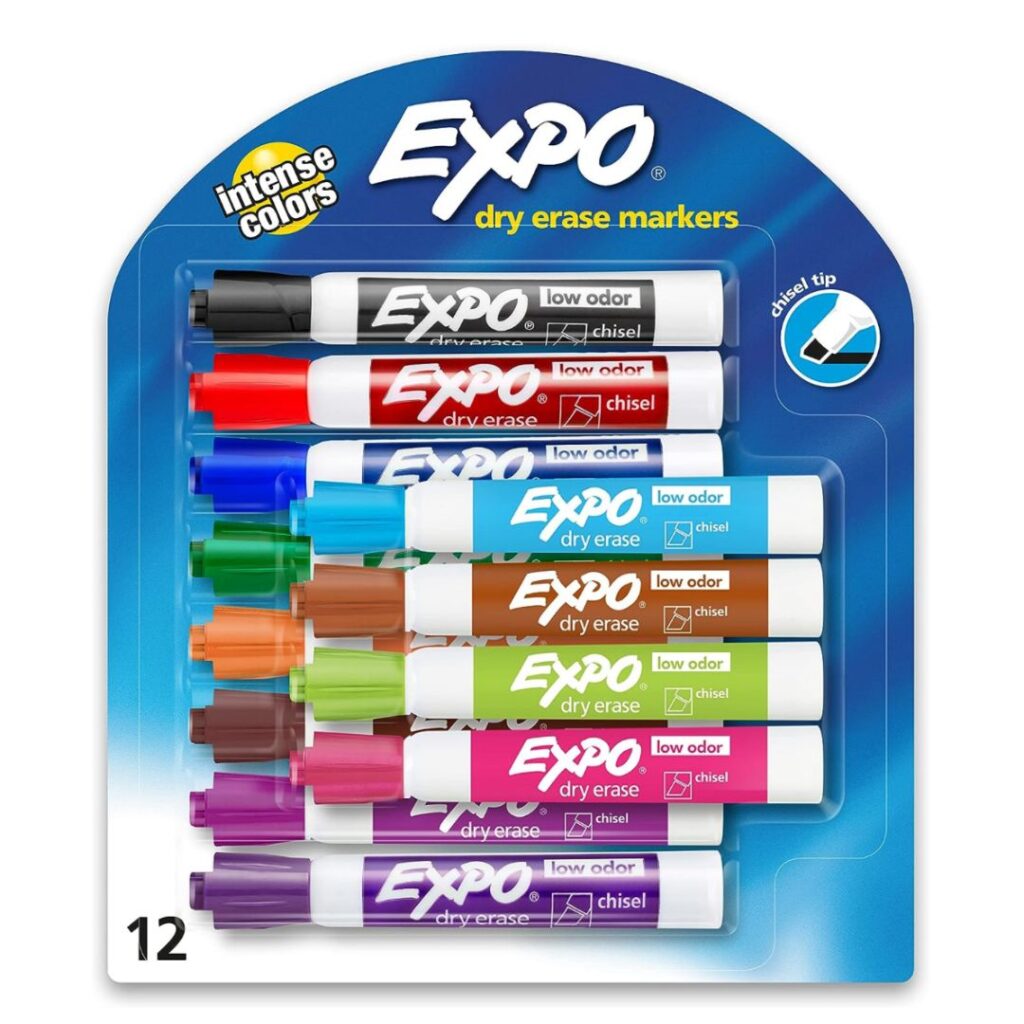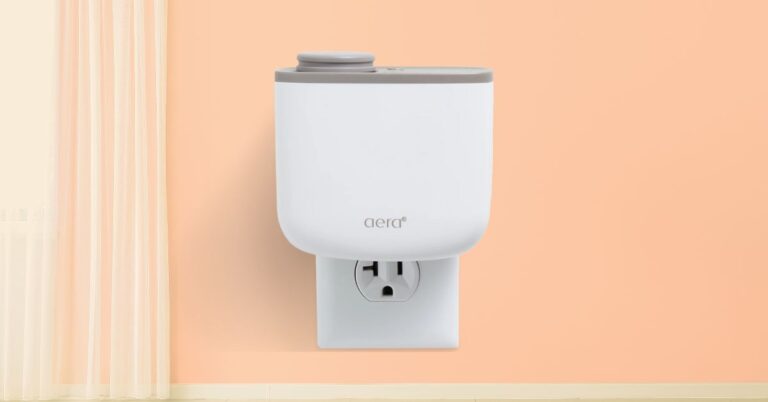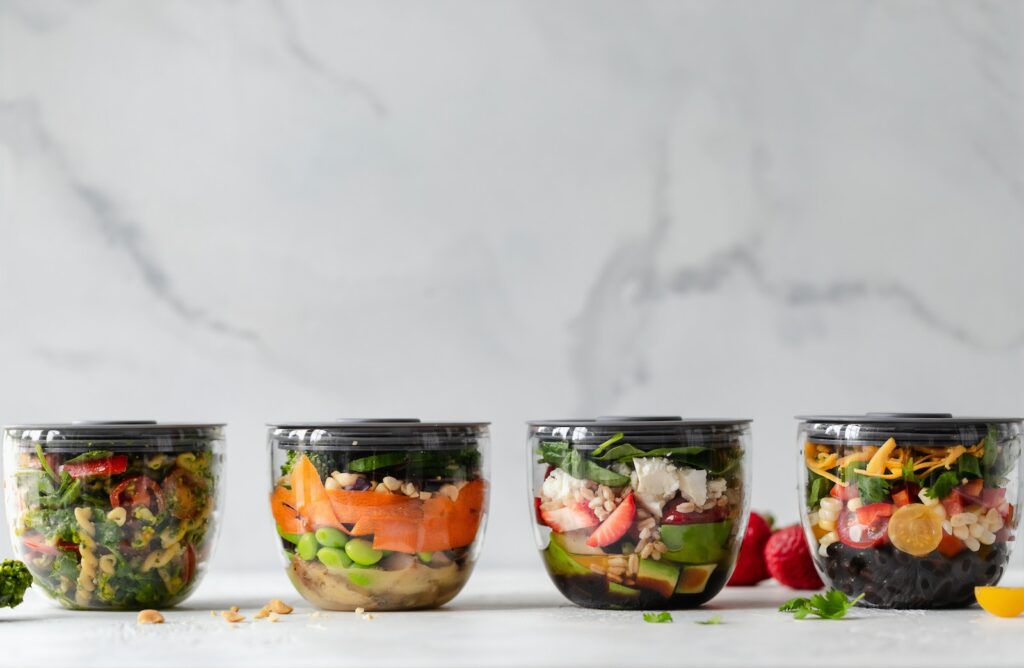Dry-erase markers, especially the famous Expo brand, have become essential in educational and corporate settings. Their convenience and versatility are undeniable. But with the rising tide of environmental and health consciousness, it’s crucial to know what’s behind the vibrant strokes of these markers. In this article, we’ll uncover the truth about the safety and composition of Expo markers and their counterparts. Dive in as we explore the ingredients, the science behind the ink, the environmental implications of using these markers and answer the question, “Are Expo markers non-toxic?”
A Brief Overview of Expo Markers

Expo markers, celebrated for their vibrant colors and smooth application, are a mainstay in classrooms, boardrooms, and homes. Their dry-erase nature makes them a sustainable alternative to conventional paper and pen. But sustainability isn’t solely about the environment; it’s also about ensuring our products don’t harm us.
The Non-Toxic Claim
Expo markers, especially the low-odor versions, often boast a non-toxic label. This means that under typical usage conditions, they shouldn’t pose a significant risk of toxicity. However, “normal usage conditions” imply that while writing or drawing is safe, ingesting its contents or using it in unintended ways isn’t.
Inside the World of Markers
Ingredients: The primary component that gives Expo markers their unique ability to write and erase is a type of denatured alcohol solvent. This solvent can be harmful if ingested in large quantities but is generally safe in small amounts that might be accidentally inhaled or come into contact with the skin during regular use.
Color Pigments: Markers, including the typical dry-erase ones and the Expo Markers Board Dudes, come in many whiteboard marker color choices. These colors are derived from various color pigments, some of which might contain harsh chemicals. However, many reputable brands ensure these pigments are safe for regular use.
Low Odor Ink Formula: One of the standout features of many modern markers, including the Expo, Expo Vis-A-Vis, and Zenzoi markers, is the low odor ink formula. This formula reduces the presence of harmful volatile compounds, making the markers less irritating, especially for those with chemical sensitivities.
Quality Fiber: The fine and chisel tip of the marker, often made from quality fiber, determines the smoothness of the writing. This fiber ensures the ink flows seamlessly onto the marker board without any hitches.
Vis-a-Vis Wet Erase Markers: Unlike the typical dry-erase markers that can be removed with a dry eraser or dry cloth, the Expo Vis-a-Vis wet-erase markers require a damp cloth for erasing. They offer a more semi-permanent writing solution, ensuring the content is not accidentally wiped off.
According to Expo, “Wet erase markers contain water-soluble dyes and are intended for acetate, film or non-porous laminated surfaces. Wet-erase markers can only be removed with a damp tissue or cloth. Dry erase markers erase with an eraser on most non-porous materials, like whiteboards, porcelain, melamine, and glass.”
Permanent Markers: On the other end of the spectrum from whiteboard markers are permanent markers. As the name suggests, these markers offer a permanent writing solution and often contain different chemicals than their erasable counterparts.
Safety and Environmental Concerns
Toxic Chemicals: While many markers, especially those from reputable brands, are labeled non-toxic, some might still contain harmful volatile compounds. These toxic chemicals can lead to serious health issues if ingested or inhaled in large quantities. These compounds can especially harm those with respiratory issues or chemical sensitivities.
The ASTM D-4236 Standard: ASTM D-4236 is a standard specification set by the American Society for Testing and Materials (ASTM). This particular standard relates to labeling art materials for chronic health hazards.
Purpose: The primary objective of ASTM D-4236 is to ensure that art materials are appropriately labeled for any potential chronic health hazards. This is especially crucial for products that might be used by children or in schools. The standard ensures that consumers, especially parents and educators, are informed if an art product contains any ingredient that could pose a chronic health risk if misused.
Toxicological Evaluation: Products that adhere to the ASTM D-4236 standard have undergone a toxicological evaluation by a qualified professional. This means a toxicologist has assessed the product’s ingredients and determined their potential risks. If a risk is identified, it must be clearly stated on the product’s label.
Labeling Requirements: If a product poses no chronic health hazard when used as intended, it can be labeled as “conforms to ASTM D-4236.” However, if there’s a potential risk, the product must carry a warning label detailing the nature of the risk and any necessary precautionary measures. This might include statements like “Not suitable for children under 3 years” or specific instructions about safe use.
Relevance to Markers: For products like Expo markers and other art materials, adhering to ASTM D-4236 assures consumers. It signifies that the product has been evaluated for chronic health risks and that any potential hazards are clearly communicated on the label.
The Art and Creative Materials Institute: The Art and Creative Materials Institute has certified products as safe since 1940. According to the institute, items marked with “The Approved Product (AP) Seal identifies art materials that are safe and certified in a toxicological evaluation by a medical expert to contain no materials in sufficient quantities to be toxic or injurious to humans, including children, or to cause acute or chronic health problems. Children in grade six and lower and adults who may not be able to read and understand safety labeling should use only non-toxic materials.
Are Expo Markers Non-Toxic? The Verdict
Expo Markers, when used as intended, are non-toxic and safe. The Expo Dry Erase and Expo Vis-a-Vis markers carry the AP seal and meet or exceed ASTM D-4236. Zenzoi Dry Erase Markers also meet or exceed ASTM D-4236. However, as with all products, they should be used responsibly. As consumers, staying informed and making eco-friendly and health-conscious choices is paramount. Whether you’re opting for the classic Expo, the new Zenzoi, or any other brand, always ensure you choose products that align with your health and environmental values.
Note: Always refer to the product label and manufacturer’s guidelines for the most accurate and up-to-date information.
You Might Also Like:
9 Safest Pans to Cook With For Good Health in 2024
7 Best Non-Toxic Wax Melts & DIY Beeswax Melt Recipe
10 Best Non-Toxic Wall Plug-Ins + Alternative Air Fresheners
Why Should You Care About Non-Toxic Wall Plug-Ins? A pleasantly scented room can change your…










